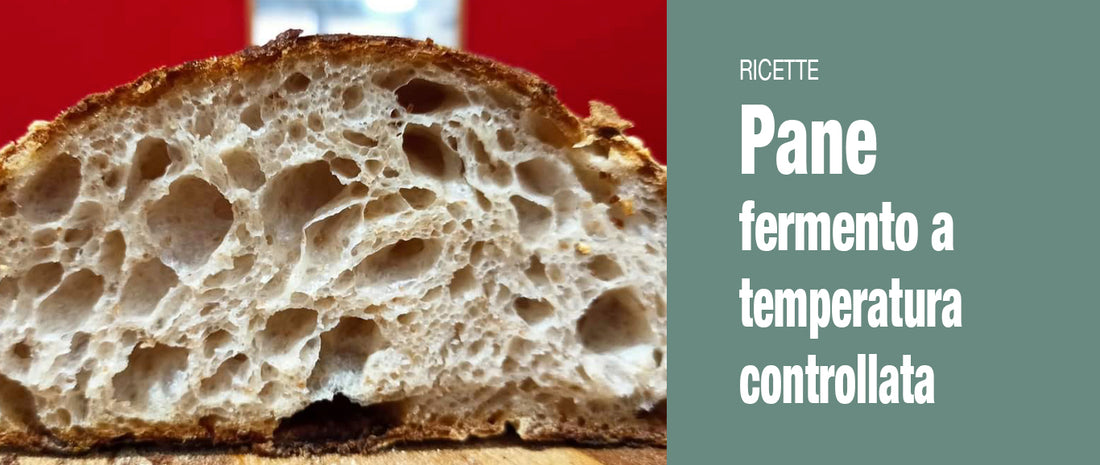
Detailed recipe of the bread course: Temperature Controlled Ferment
This recipe highlights the importance of preferment and its management at controlled temperatures to optimize the fermentation and flavor of the bread.
Ingredients:
-
For the cold ferment:
- 800 g of Prosperosa flour
- 440 g of water
- 8 g of fresh brewer's yeast
-
For closing the dough:
- 200 g of Facondia flour
- 320 g of water
- 17 g of fresh brewer's yeast
- 25 g of salt
Tools Needed:
- Large bowl for kneading
- Spatula or spoon
- Refrigerator (for cold fermentation)
- Baking tray
Preparation:
-
Cold ferment preparation:
- In a large bowl, mix the Prosperosa flour with the water and fresh brewer's yeast until you obtain a smooth dough.
- Let the dough rest at room temperature for 90 minutes.
- After resting, transfer the dough to the refrigerator and let it mature for 16-20 hours. This slow, prolonged development at low temperatures allows for a more controlled fermentation that improves the flavor and texture of the bread.
-
Closing the dough:
- Remove the dough from the refrigerator and let it acclimate to room temperature for about 30 minutes.
- Add the Facondia flour, water, fresh yeast and knead until you obtain a smooth mixture.
- Add salt towards the end of kneading to prevent it from inhibiting the activity of the yeast.
- Let the dough rest until it doubles in volume, approximately 1-2 hours depending on the room temperature.
-
Shaping and second leavening:
- After the first rise, turn the dough out onto a lightly floured surface.
- Divide the dough into desired portions and shape into loaves.
- Place the loaves on a baking tray covered with baking paper.
- Cover with a damp cloth and let rise until doubled in volume, about 1-2 hours.
-
Cooking:
- Preheat the oven to 250°C.
- Bake the loaves and after 10 minutes reduce the temperature to 200°C.
- Continue baking for another 15 to 20 minutes or until the bread is golden brown and sounds hollow when tapped on the bottom.
-
Cooling down:
- Remove the bread from the oven and let it cool on a rack to prevent moisture from accumulating under the crust.
This detailed recipe shows the importance of time and temperature control in the production of high-quality bread, highlighting how a good preferment can enrich the flavor and improve the structure of the final bread.
